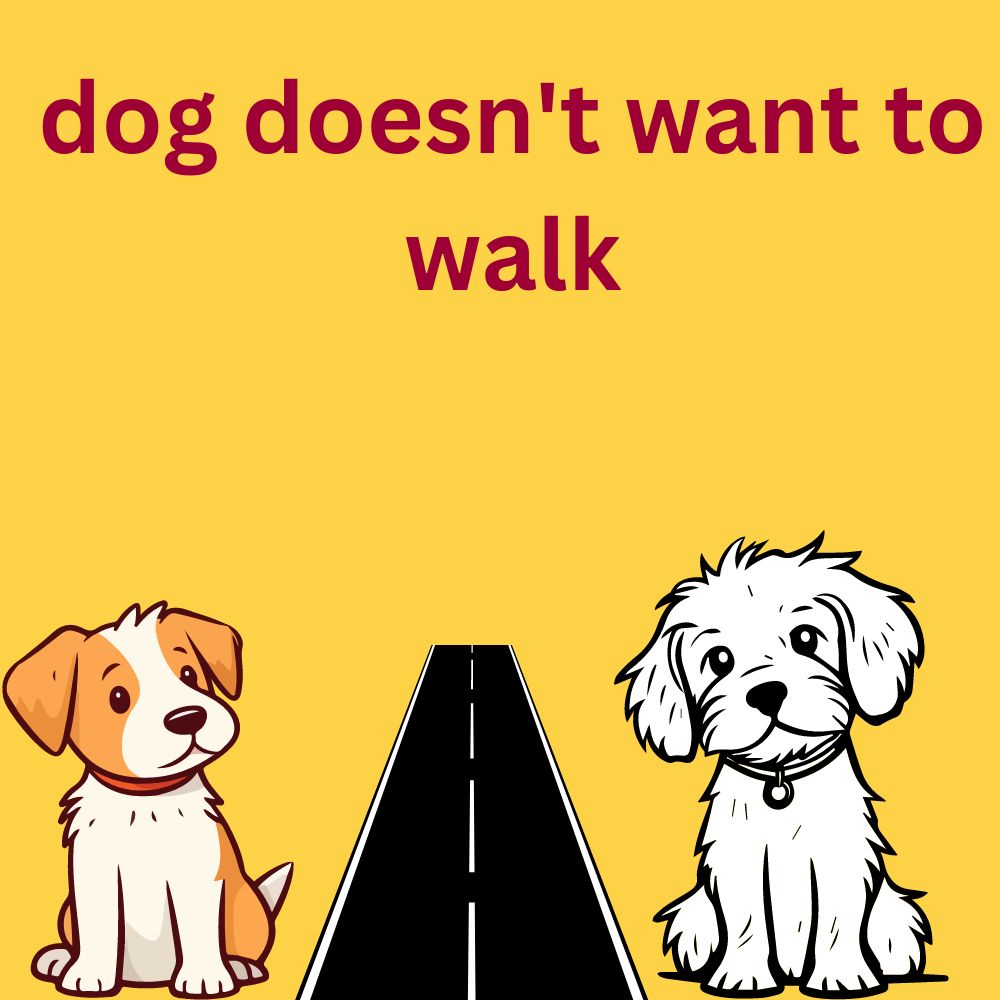Dog Doesn’t Want to Walk: Understanding the Behavior and Finding Solutions
Every day, we all look forward to walking our pets. It gives our animal friends and us cerebral stimulation, exercise, and quality time together. What occurs, though, if your dog immediately stops wanting to go on walks? For every pet owner, this may be both aggravating and worrisome. In this post, we’ll examine the potential causes of dogs’ aversion to walking and offer realistic advice and methods to address this habit.
Educating a Puppy or New Walker on the Pleasures of Walking
Walking can be frightening and intimidating for pups and new walkers. Since they are unfamiliar with the outdoors, the sights and sounds may cause them to feel uneasy or afraid. You should always keep in mind that your dog should look forward to his or her walks rather than fear them.
Start with quick, leisurely strolls in well-known locations to assist your puppy or newcomer to walking appreciate walks. Encourage them to continue walking by giving them praise and incentives. Introduce fresh air and lengthen the walk gradually. This will assist kids in gaining self-assurance and teaching them to identify walks with good things.
My Dog Doesn’t Want to Walk; why?
Actually? Canine companion refuses to go on walks? You shouldn’t give up on your dog; there are a few legitimate reasons why they refuse to dog stops walking and won’t move. Puppies who choose to apply the brakes as opposed to walk typically have a valid cause!
All of a sudden, my dog doesn’t want to walk
Consider the possibility of an underlying medical condition if your dog, who was once enthusiastic about walks, has stopped showing interest in them. Canine companions may encounter discomfort or difficulty when walking due to joint pain, arthritis, or other medical issues. Should your dog exhibit this abrupt behavioral shift, it’s critical to bring him in for a checkup at the veterinarian.
My dog refuses to go for a walk or eat.
A dog doesn’t want to walk that exhibits signs of depression or anxiety may not want to my dog doesn’t want to walk or eat. Dogs can experience mental health problems, just like people do. It is crucial to discuss these concerns with a veterinarian if your dog is exhibiting symptoms of depression, such as appetite loss, lack of interest in activities, and low energy. For your dog to get over these emotions, they can offer resources and support.
Fear of the outside world can be a reason for non-walking puppies.
A puppy’s socialization process is how they learn about the outside world because they have no life experience at this point. Occasionally, fear prevents a puppy from walking.
We all understand how crucial it is to teach your puppy about motorcycles, automobiles, trains, and all the various noises found in the outside world, but it does require some time. Your puppy will benefit from great socialization experiences and grow in confidence if you are kind and gentle with them.
How Can I Help My Dog Who Won’t Move or Quit Walking?
Fear or nervousness is among the most frequent causes of a dog wants to go home during walk reluctance to go for walks. This might be the result of being in a strange place or an agonizing prior experience. It’s critical to exercise patience and understanding in these situations. Walking your dog in these circumstances can simply exacerbate their fear.
Determine what is causing your dog to get fearful if they stop walking and refuse to move. A new object on their typical route could be the cause, or it could be a loud noise, other dogs, or even anything little. When you’ve established what the trigger is, work to progressively introduce it to your dog in a constructive manner. This could be giving them goodies whenever they see the trigger or taking them for small walks around the neighborhood until they feel safe.
Dogs Opt Out of Walking for Four Reasons
- Physical pain or discomfort: As was previously said, dogs that are in any kind of physical pain or discomfort may refuse to go on walks.
- dread or anxiety: In some circumstances, dogs may experience dread and anxiety, which makes them reluctant to go on walks.
- Insufficient socialization – Unsocialized puppies or newly trained walkers may experience anxiety and overwhelm in unfamiliar surroundings.
- Routine modifications might make dogs anxious and reluctant to go for walks as they are creatures of habit.
Treats for Walking
Treats work well as a positive reinforcement tool when it comes to motivating your dog to go for walks. Select tiny, calorie- and protein-efficient goodies that are bite-sized. Giving treats during the dog stopping on walk or whenever your my dog doesn’t like to walk exhibits great behavior might help him form a positive relationship with walking.
Old Dog Is Not Into Walking
Walking can be a challenge for older dogs because of joint pain, arthritis, or other age-related health problems. It’s crucial to take your dog for routine examinations and to treat any pain they might be feeling. If you still want to provide them exercise and mental stimulation, you might also think about getting a stroller or taking them on shorter walks.
Why Does My Dog Want to Return After Stopping His Walk?
You may have a physically uncomfortable or fearful dog if they stop walking and want to return home. Prior to treating the behavior, it is crucial to screen out any medical conditions. If there are no underlying health issues, gradually introduce your dog to new situations and make walks enjoyable for them. Their comfort level will increase and their desire to return home will decrease as a result.
Conclusion
In conclusion, it’s critical to realize that a dog’s refusal to go for walks is a behavior that has to be addressed rather than overlooked. Positive reinforcement methods combined with root cause analysis can assist our dogs overcome their fear and anxiety related to walking.




